Abstract
Several adverse health effects (including cancer and noncancer effects) may be the result of an imbalance between exogenous and endogenous invading substances and defense mechanisms. In these cases the probability of an adverse effect depends on how much the exposure to a substance increases or decreases the number of defenders or their efficiency as well as increasing or decreasing the number of invaders. Rather than using a dose scale such as parts per million or milligram/kilogram/day in these cases, dose-response models can directly incorporate the impact of defense mechanisms by using a dose scale that corresponds to the number of invaders that break through the defenders and become free to do their damage. The number of breakthroughs at a specific age, the cumulative number of breakthroughs by a specific age, or the cumulative number of breakthroughs in a window of time would usually be the appropriate age-dependent dose. Although a lifetime average daily dose level can be used as a surrogate for an age-dependent dose in simplistic dose-response models, the age-dependent dose itself can be used in more biologically based models that include time, reflect the key role of feedback mechanisms, and treat the human body as an age-dependent dynamic system responding to internal and external stimuli and not as a system at equilibrium. Some illustrative biologic examples of defense mechanisms and invader-defender interactions are presented. Several numerical examples are given in which the dose incorporates the age-dependent effects of a substance on the number of invaders, the number of defenders, and/or the defenders' efficiencies.
Full text
PDF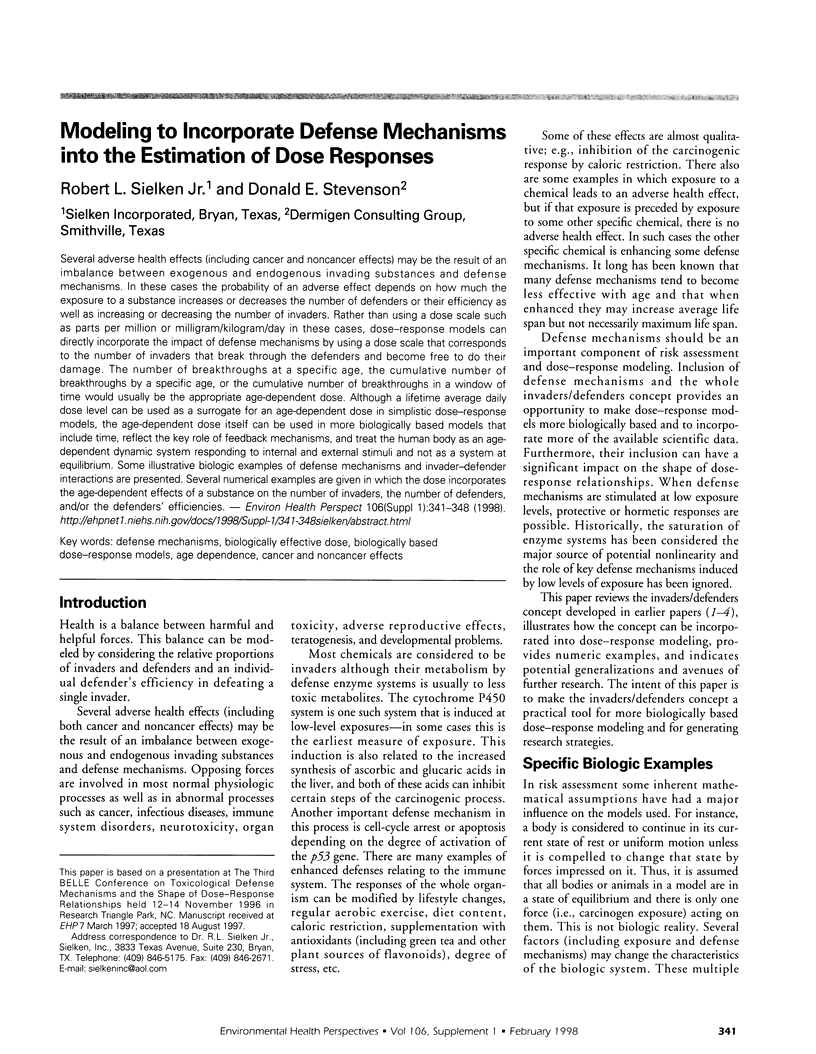
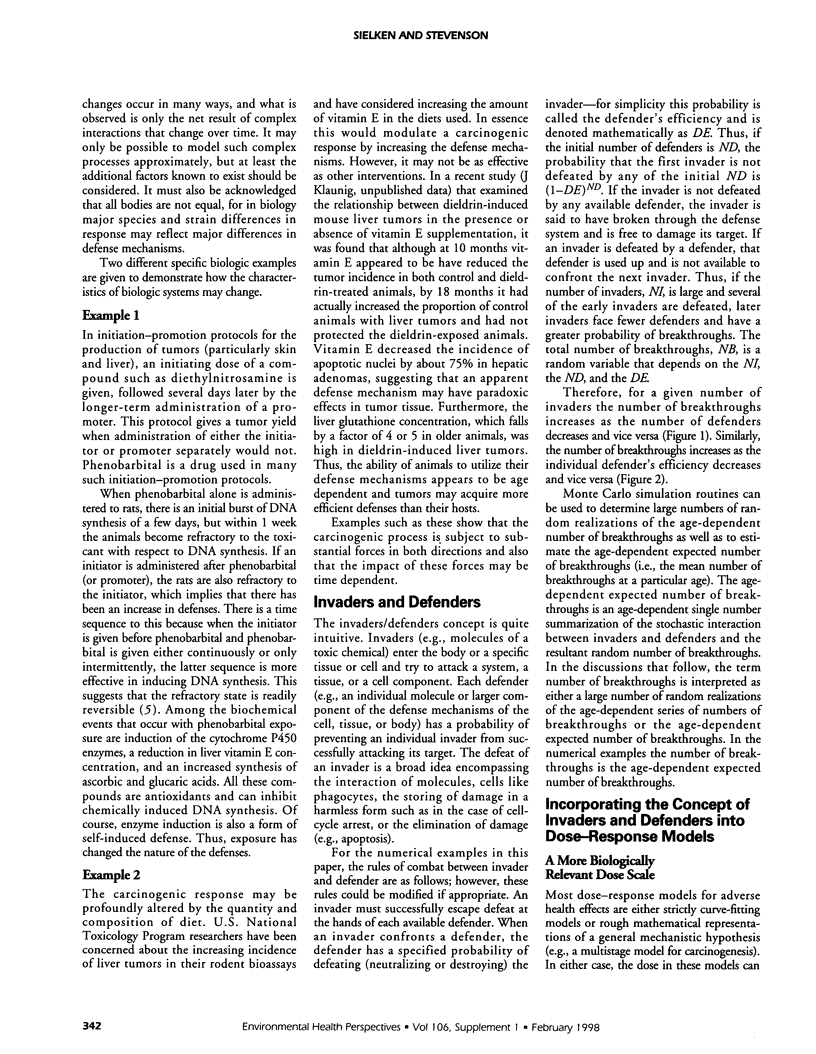
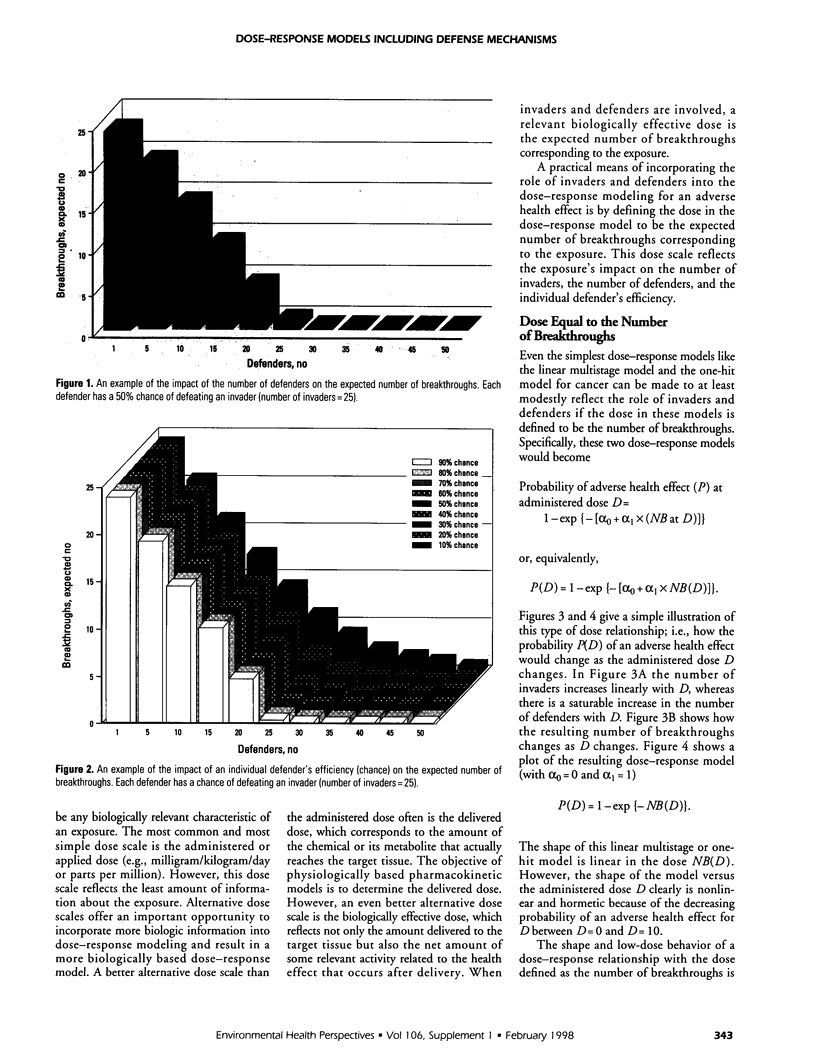
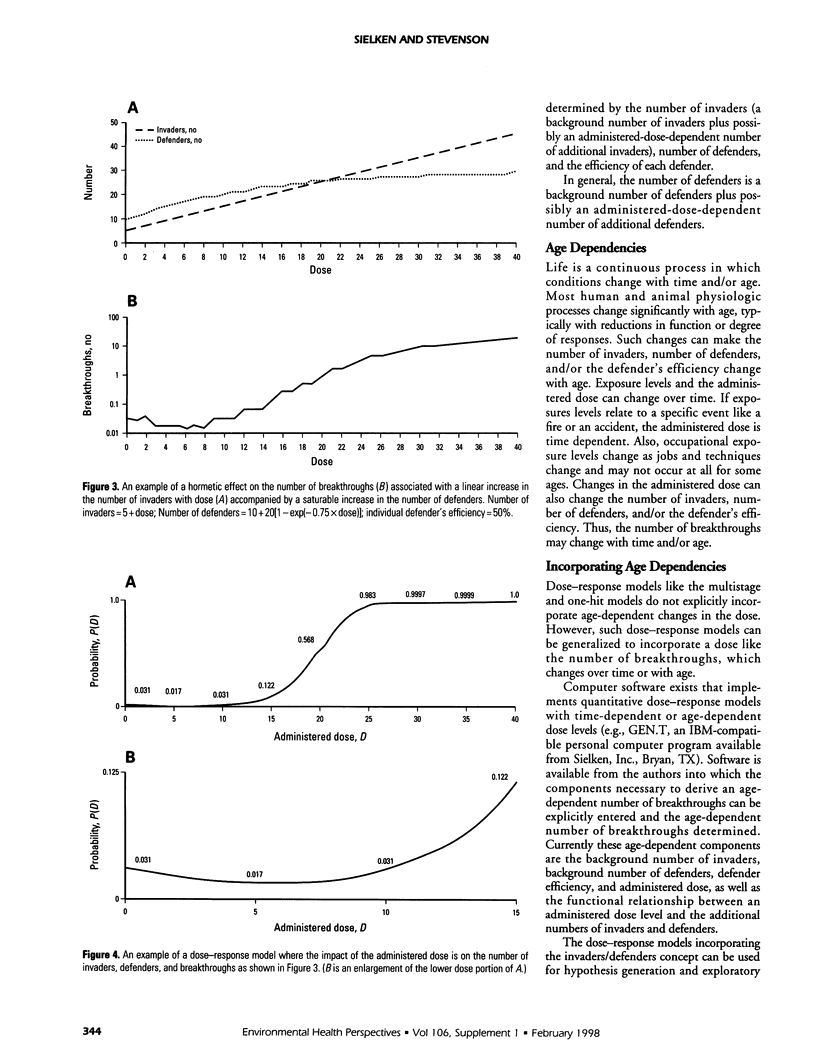
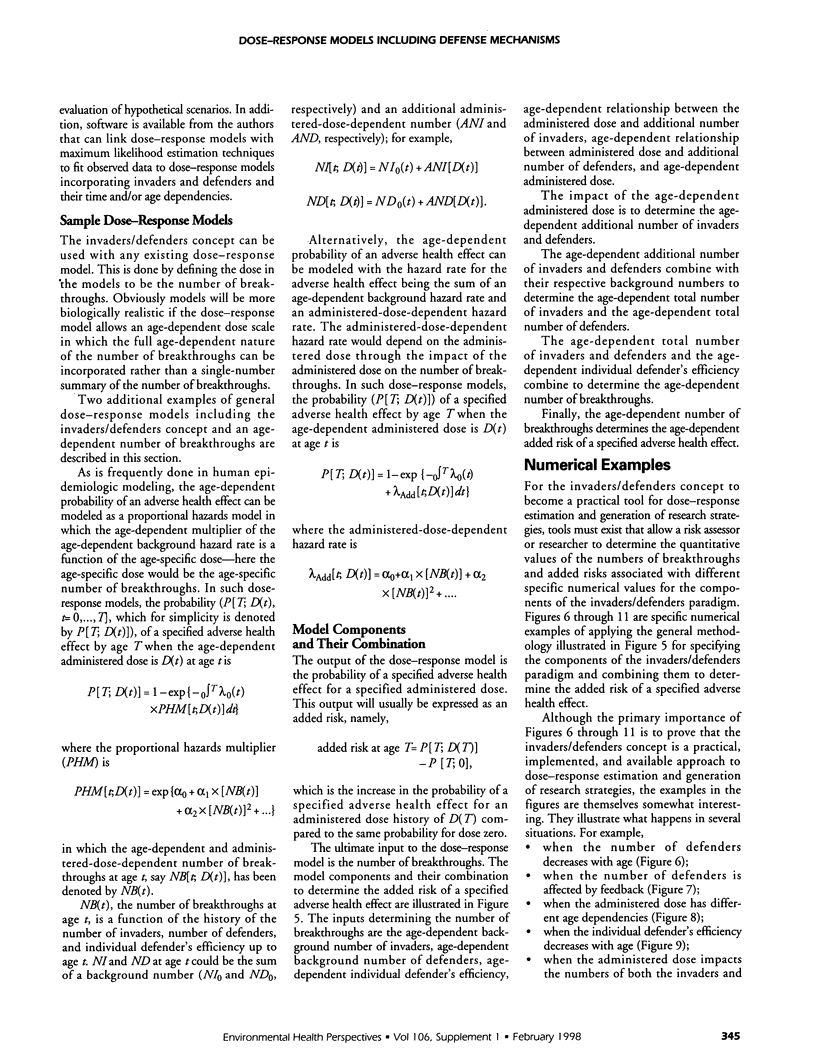
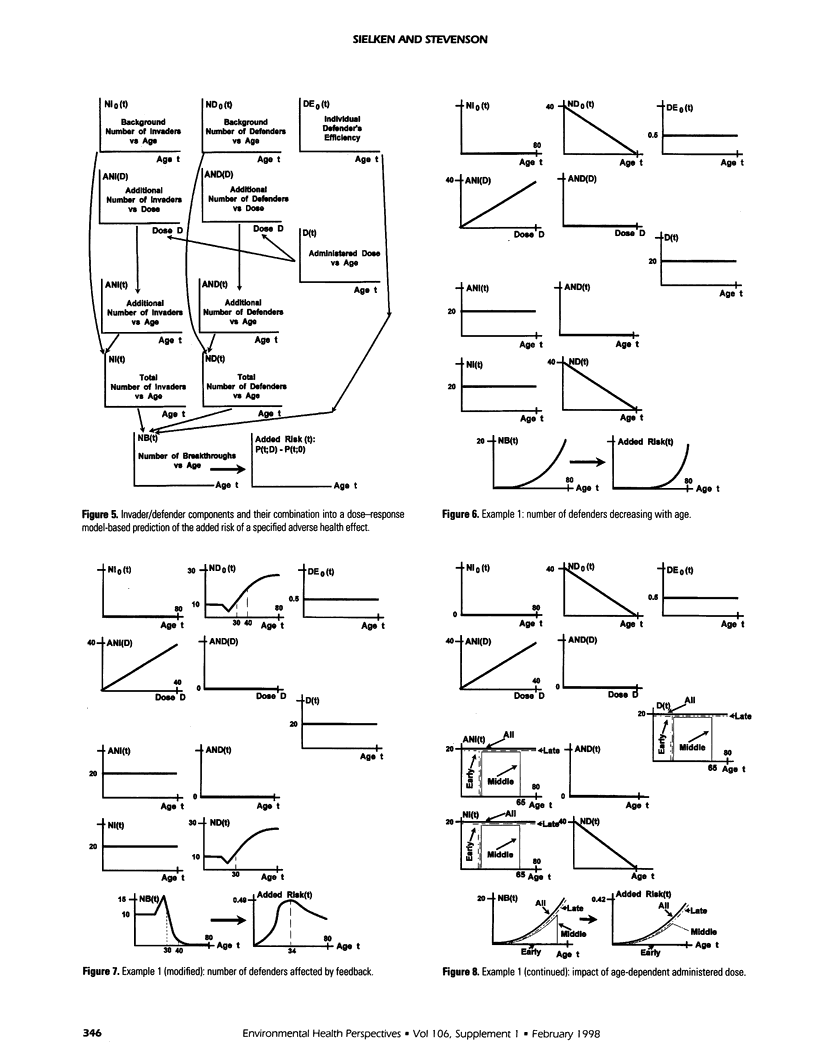
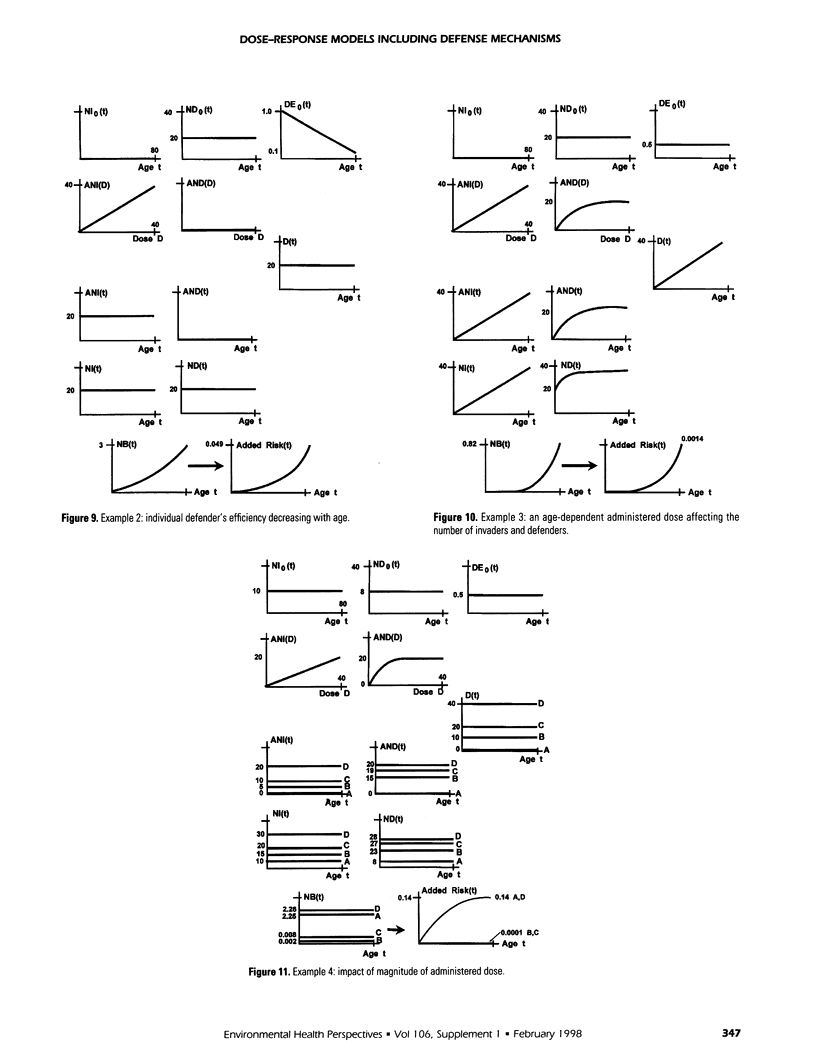
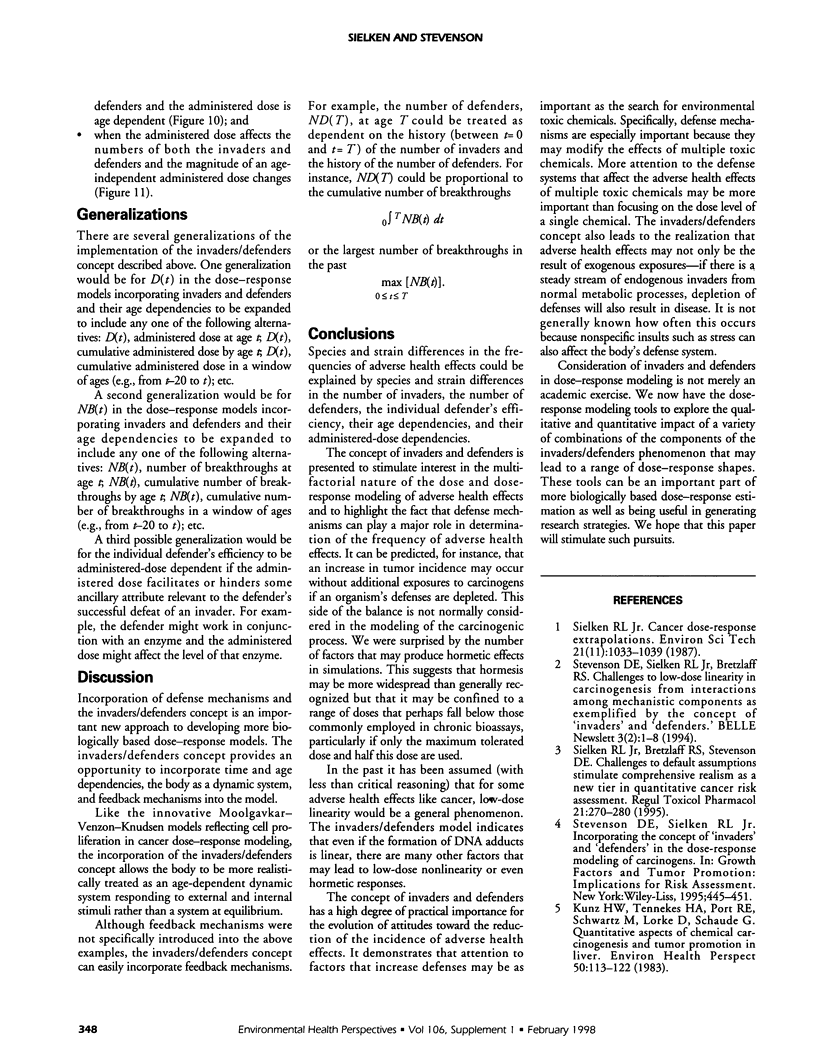
Images in this article
Selected References
These references are in PubMed. This may not be the complete list of references from this article.
- Kunz H. W., Tennekes H. A., Port R. E., Schwartz M., Lorke D., Schaude G. Quantitative aspects of chemical carcinogenesis and tumor promotion in liver. Environ Health Perspect. 1983 Apr;50:113–122. doi: 10.1289/ehp.8350113. [DOI] [PMC free article] [PubMed] [Google Scholar]
- Sielken R. L., Jr, Bretzlaff R. S., Stevenson D. E. Challenges to default assumptions stimulate comprehensive realism as a new tier in quantitative cancer risk assessment. Regul Toxicol Pharmacol. 1995 Apr;21(2):270–280. doi: 10.1006/rtph.1995.1041. [DOI] [PubMed] [Google Scholar]




